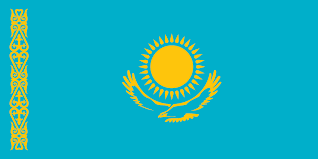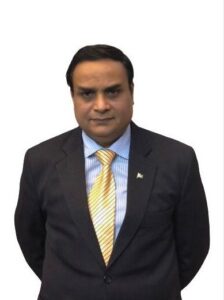
By: Dr Mehmood Ul Hassan Khan
The Republic of Kazakhstan celebrates its 32 independence day. Being the largest economy of Central Asia it has achieved miraculous socio-economic achievements and uplifts the lives of common people. Constant economic stability and sustainability successfully nurtured political stability and caravans of real politicization and democratization remained on right path to protect human values, rights and social justice since its inception.
During the 32 years of its independence, Kazakhstan succeeded to improve its socio-economic indicators and transformed into a modern state with a strong economy, politics and vibrant society due to which it has been dubbed as the most responsive state in the world. Right from the beginning it adopted numerous holistic and comprehensive policies and constant economic structural reforms in business, trade, and industrialization making Kazakhstan a progressive and prosper country.
It seems that wise political decisions enabled stable economic growth after the collapse of the Soviet Union. The economic situation in the early 90s was not up the mark due to which industrial enterprises were shutting down, all economic ties were severed; wages, pensions and benefits were delayed for months, the country experienced rising inflation and a massive shortage of essential goods. The economy was derailed and society was de-focused. 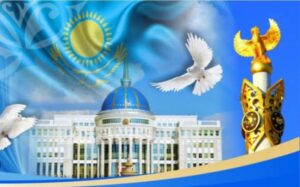
Unfortunately, 130 large enterprises shut down in Kazakhstan, the number of unemployed people reached two million, there was a 50 percent monthly inflation, and annual inflation exceeded 2,000 percent in early years of its independence. However, the national narrative of economy first, then politics proved effective to achieve the desired goals of socio-economic prosperity in the country.
Interestingly, Kazakhstan’s decision to discard the nuclear missile arsenal, which ranked as the fourth most powerful in the world at that time contributed significantly to the country’s positive image in the international community.
On diplomatic fronts, the creation of the Shanghai Cooperation Organization (SCO), the Eurasian Economic Union (EEU), hosting Congresses of Leaders of World and Traditional Religions, and the creation of the Organization of Turkic States has immensely enhanced its diplomatic status in the region and beyond.
The number of Small and Medium-sized businesses increased from 500,000 in 2005 to 1.4 million in 2021. As a result, the GDP increased 17 times. Population income grew 10 times. Unemployment was reduced from 12.8 percent to mere 4.9 percent the lowest in the region. 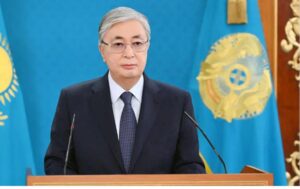
Average life expectancy in the country has increased to 71 years. Since independence, five million citizens have improved their living conditions. More than 5,000 new social facilities were built. As a result, coverage of pre-school education for children reached 99 percent.
Over the past 12 years 1,500 projects were implemented, and more than 500 new types of products have been launched. Kazakhstan now exports its products to more than 130 countries of the world vividly reflecting it successful economic/commercial diplomacy fostering trade & commerce and business activities.
Remarkably, the share of women in the Majilis (lower house of Parliament) constitutes 27.1 percent. The number of women who were elected to serve the local government has increased from 568 to 740. However, President Kassym-Jomart Tokayev initiated 30 percent quotas for women and young people in the list of political parties. The policy has already proven its effectiveness as over 26 percent of mayors in rural districts are women which clearly shows the state’s successful policy of women empowerment.
Last year, Kazakhstan’s GDP reached 104 trillion tenge, and it attracted a record-breaking US$28 billion in foreign direct investment. Its foreign trade turnover hit a record level of US$136 billion, with exports accounting for US$84 billion. It external reserves have approached the US$100 billion mark.
Moreover, in the fiscal year 2022-2023, Kazakhstan successfully attracted an impressive US$41.3 billion foreign direct investment the highest in the Central Asia and South Caucasus regions.
Most recently, to further strengthen macro-economy the policy makers of Kazakhstan initiated massive economic liberalization drive and started the transferring shares of 14 large joint-stock companies and limited liability partnerships, seven buildings, 162 railway tracks and structures, cars, cash, and other property to public ownership which resultantly, consolidated greater role of the private sector in the country.
Evidently, Kazakhstan’s President H.E. Kassym-Jomart Tokayev announced Kazakhstan’s new economic course in September 2023.
President Tokakev presented new economic model of a “Just Kazakhstan,” and announced numerous integrated socio-economic and political structural reforms in the diverse sectors of economy, business, investment, trade, defense, geology, and transport. It was indeed a holistic and comprehensive road map to further transform the national economy.
The 2022 economic reforms yielded impressive results and GDP exceeded to US$226 billion, foreign direct investments reached US$28 billion, and foreign trade volume at US$134 billion.
Kazakhstan President introduced a new economic model based on principles of fairness, inclusiveness, and pragmatism, stressing the pivotal role of the manufacturing sector in achieving economic self-sufficiency. Kazakhstan’s economic strategy also encompasses the development of a comprehensive production cycle to reduce reliance on foreign goods.
The transportation and logistics sector, representing 6.2 percent of GDP in 2022, is slated for further growth, aiming to raise its share to at least 9 percent.
The Trans-Caspian International Transportation Route (TITR) presents Kazakhstan with the potential for significant economic growth. Being the Middle Corridor it provides Kazakhstan with an additional transit route through the Caspian Sea, serving as a gateway to Western markets while simultaneously bypassing Russian borders.
The President also envisaged a fivefold increase in transportation volume along this route in the medium term through coordinated efforts with partner countries such as China, Azerbaijan, Georgia, and Türkiye.
Furthermore, the North-South corridor, which connects Kazakhstan with Persian Gulf ports, is another mega project of achieving the desired goals of trans-regional connectivity. It includes the modernization of railways within Kazakh territory, such as the Bolashak-Chelyabinsk railway.
It seems that the primary objective of these proposed changes is to achieve a steady economic growth rate between 6 percent and 7 percent, with the objective of doubling the national economy’s size to US$450 billion by 2029. The particular emphasis on enhancing the Trans-Caspian corridors serves as a clear indicator of Kazakhstan’s commitment to unlocking regional economic opportunities and strengthening collaboration with its neighbors. Resultantly, Kazakhstan’s regional trade has now been increased.
Since the 2000s, Kazakhstan has witnessed impressive economic growth driven by the market-oriented reforms, vast mineral resources extraction, and strong FDI. Sustained economic growth has transformed the country into an upper middle-income economy and rising living standards and reducing poverty. The economy grew by 5 percent during the first half of the year 2023; it appears that Kazakhstan has recovered from its modest dip in 2022.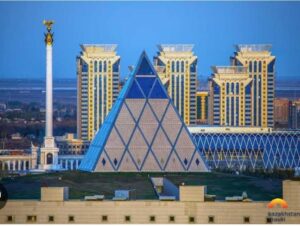
Kazakhstan has nevertheless emerged as not only the largest economy in Central Asia but also the one with the highest income per capita in the region. It constantly achieved 10 percent GDP in 2000s. According to the International Monetary Fund (IMF), Kazakhstan undertook rapid growth and increases in living standards because of the country’s, structural reforms and prudent macroeconomic management. Kazakhstan is now pioneer of market economy. The mining and manufacturing industries increased by 5.6 percent and natural gas production by 2.5 percent), construction industry and service sector. The growth rate of investments in fixed assets amounted to 13 percent in 2023.
Their inflow increased in transportation and warehousing by 57 percent, trade by 32 percent, agriculture by 22 percent, education by 21.5 percent, as well as in industry by 10.9 percent, including mining by 11.4 percent. The inflows of FDI also significantly accelerated during 2023’s first three quarters. It registered a massive 13.1percent year-on-year growth compared with the 9.2-percent growth rate during all of 2022. Strong investment dynamics were supported by continued production increases in mining and manufacturing while the contribution from housing investment eased.
The expansions of free-trade zones (FTZs) and special economic zones (SEZs) supported native industries with tax incentives and better access to international markets. Kazakh Invest established by the government to showcased Kazakhstan’s untapped investment potential across a range of priority industries, including agribusiness, mining and metals, chemicals and petrochemicals, machinery manufacturing and infrastructure development. Furthermore, the creation of the Astana International Financial Centre (AIFC) in 2018 proved a vibrant financial hub that has established a solid legal framework to advance the development of many financial services, including banking, asset management, capital markets, Islamic finance and FINTECH (financial technology).
Kazakhstan’s annual GDP growth rates are expected to remain buoyant this year and next. The European Bank for Reconstruction and Development (EBRD), sees GDP at 5 percent for 2023 and 2024.
The rating agency S&P Global Ratings the economy will expand by nearly 5 percent in 2023, supported by growth in the construction, trade, information and communications, transport, and mining sectors. Over the next three years, it forecasts that the expansion of the Tengiz oil field, which should significantly increase oil production.
In addition to this, the country has seen significant expansion in sectors such as retail and wholesale trade and construction. There has also been a pick-up in public and private investment in infrastructure, transport and warehousing, reflecting Almaty’s growing role as a distribution hub serving Central Asian markets.
In summary, Kazakhstan has been achieving high ratios of GDP, GNP, FDI, FPI and joint ventures in the last three decades confirming its economic potential and diversification.
Constant and continued economic structural reforms enabled Kazakhstan to achieve the Middle Income goal but somehow because of various internal and external reasons, it became stuck in the Middle Income Trap (MIT) which should be removed through massive qualitative industrialization, green transformation, openness, modernization, economic globalization, innovations, digitalization and diversification of economy along with further growth of human capital in the days to come. In this regard, the integrated economic policies of China, Vietnam, Indonesia and even Singapore may also be useful to overcome the existing MIT.
It is suggested that Kazakhstan should further strengthen competition and human capital and try to improve public sector and SOEs performances to make its economy more competitive and advance. It should also initiate various reforms in carbon and energy pricing, strengthen social protection, and invest in climate adaptation.
Obviously, robust economic growth and productivity should be pursued by implementing structural reforms to transition from a state-dominated development model to a more resilient private sector-led in which private sector has more stakes.
The fostering competition and limiting the market dominance of SOEs, reinforcing the rule of law, and resolute anticorruption action should be carried out in the country. The private investment and competition in non-oil growth sectors should be promoted and encouraged.
Last but not least, the future path of Kazakhstan will heavily rely on further economic diversification, green transformation, energy & food security, digitalization, community development, development of Islamic banking, banking & financial integration, services sector and SME.
There is an urgent need to minimized North-South economic disparity through balanced regional development. New economic model of achieving a balanced Urban-Rural integration is urgently needed. Greater regional connectivity and sustainable economic ties with Pakistan would be helpful. Peaceful exports of massive uranium reservoirs would be a jack-pot for its economy in the days to come. (The Author is Executive Director at The Center for South & International Studies (CSAIS) Islamabad &
Regional Expert on Kazakhstan, China, CPEC & BRI)

